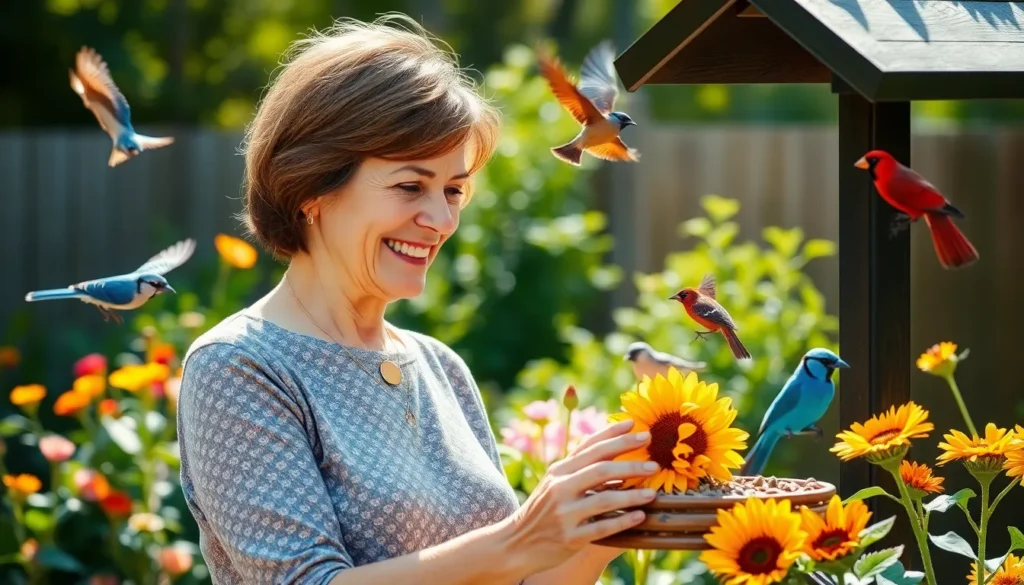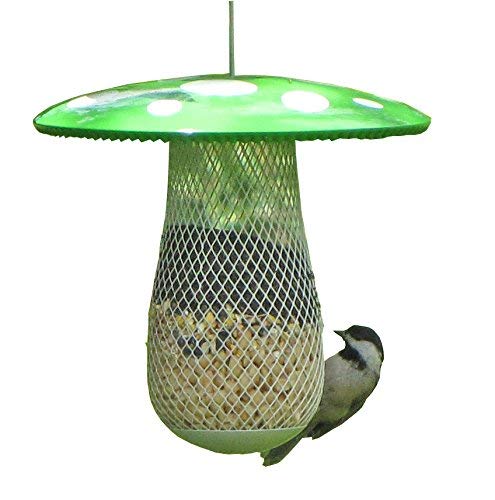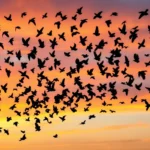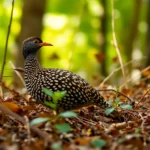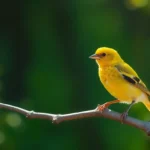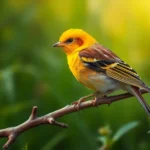We’ve all experienced that magical moment when a vibrant cardinal lands at our window feeder or watched in wonder as a family of chickadees discovers our backyard sanctuary. Bird feeding transforms ordinary outdoor spaces into thriving wildlife habitats while bringing nature’s beauty directly to our doorstep.
Creating the perfect feeding station isn’t just about scattering seeds and hoping for the best. We need to understand which foods attract exact species what types of feeders work most effectively and how to maintain a safe healthy environment for our feathered visitors. The right approach can turn your yard into a bustling bird paradise that provides year-round entertainment and contributes to local wildlife conservation.
Whether you’re a complete beginner or looking to enhance your existing setup we’ll guide you through everything needed to create an irresistible bird feeding station that keeps species coming back season after season.
What Is Bird Feeding and Why It Matters
Bird feeding involves providing food sources for wild birds through feeders, scattered seeds, or natural food sources in outdoor spaces. This practice creates consistent nutrition access for local bird populations while offering humans opportunities to observe wildlife behavior up close.
The activity transforms ordinary backyards into active ecosystems where multiple species gather throughout different seasons. Cardinals visit seed feeders during winter months when natural food becomes scarce. Hummingbirds rely on nectar feeders during migration periods. Woodpeckers frequent suet feeders that provide essential fats for energy.
Bird feeding supports wildlife conservation by supplementing natural food sources during harsh weather conditions. Urban development reduces natural habitats where birds typically find seeds, insects, and berries. Feeders bridge this gap by offering reliable nutrition sources when trees and plants can’t meet demand.
Research from the Cornell Lab of Ornithology shows that 57 million Americans participate in bird feeding activities annually. These efforts contribute $4 billion to the economy through feeder purchases, seed sales, and related equipment. Studies indicate that consistent feeding increases local bird populations by 23% in suburban areas.
The practice benefits human wellbeing through stress reduction and nature connection. Watching birds reduces cortisol levels and improves mental health outcomes according to environmental psychology research. Daily bird observation creates routine mindfulness moments that enhance overall quality of life.
Educational opportunities emerge naturally through bird feeding activities. Children learn species identification skills while observing feeding behaviors. Adults develop understanding of migration patterns, seasonal habits, and ecological relationships between different bird species and their environments.
Best Bird Feeding Practices for Beginners
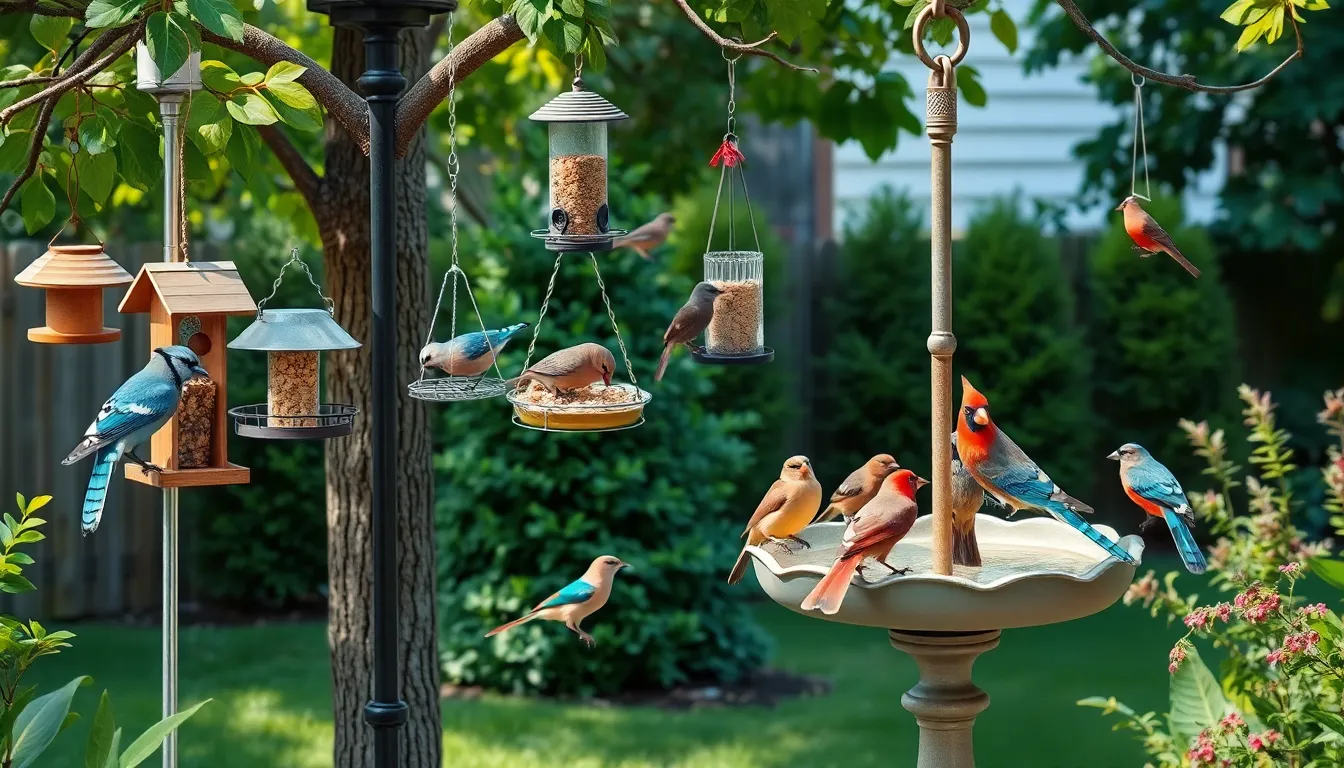
Creating a successful bird feeding station requires strategic planning and consistent maintenance. Following these proven practices helps beginners establish thriving feeding environments that attract diverse bird species year-round.
Choosing the Right Location for Feeders
Feeder placement determines the success of your bird feeding efforts. Position feeders 10-12 feet away from dense shrubs and bushes to give birds escape routes while preventing predators from ambushing them. We recommend placing feeders within view of windows so you can observe bird behavior without disturbing their natural feeding patterns.
Elevated locations work best for most feeder types. Mount tube feeders and suet feeders 5-6 feet above ground level to keep them accessible for cleaning while protecting birds from ground predators like cats and squirrels. Platform feeders perform well at 3-4 feet height since ground feeding birds like juncos and towhees prefer lower feeding stations.
Wind protection enhances feeder effectiveness throughout seasons. Place feeders on the south or southeast side of your property where natural windbreaks like trees or fences provide shelter. Avoid placing feeders directly under large trees where falling branches might damage equipment or create hazardous conditions for visiting birds.
Water sources near feeding areas increase bird activity by 40% according to Cornell Lab of Ornithology research. Install shallow birdbaths or water features within 20 feet of feeders to create complete habitat zones that meet multiple bird needs simultaneously.
Timing and Frequency of Feeding
Consistent feeding schedules establish reliable food sources that birds depend on during their daily routines. Fill feeders every 2-3 days during peak seasons (spring and fall migration) when bird activity reaches maximum levels. Winter feeding requires daily attention since birds burn more calories maintaining body temperature in cold weather.
Morning hours between 6-9 AM represent peak feeding times for most bird species. Evening feeding occurs from 4-6 PM when birds prepare for overnight fasting periods. We maintain feeders during both timeframes to accommodate different species’ feeding preferences and schedules.
Seasonal adjustments optimize bird feeding success throughout the year. Spring feeding supports nesting birds with high-energy foods like nyjer seeds and suet during April through June. Summer feeding decreases to every 4-5 days since natural food sources become abundant. Fall migration feeding resumes intensive schedules from August through October when birds require extra energy for long-distance travel.
Weather conditions influence feeding frequency significantly. Increase filling frequency during storms, snow events, and extreme temperature periods when natural food sources become inaccessible. Clean feeders weekly during humid summer months to prevent mold growth that can harm bird health.
Types of Bird Feeders and Their Benefits
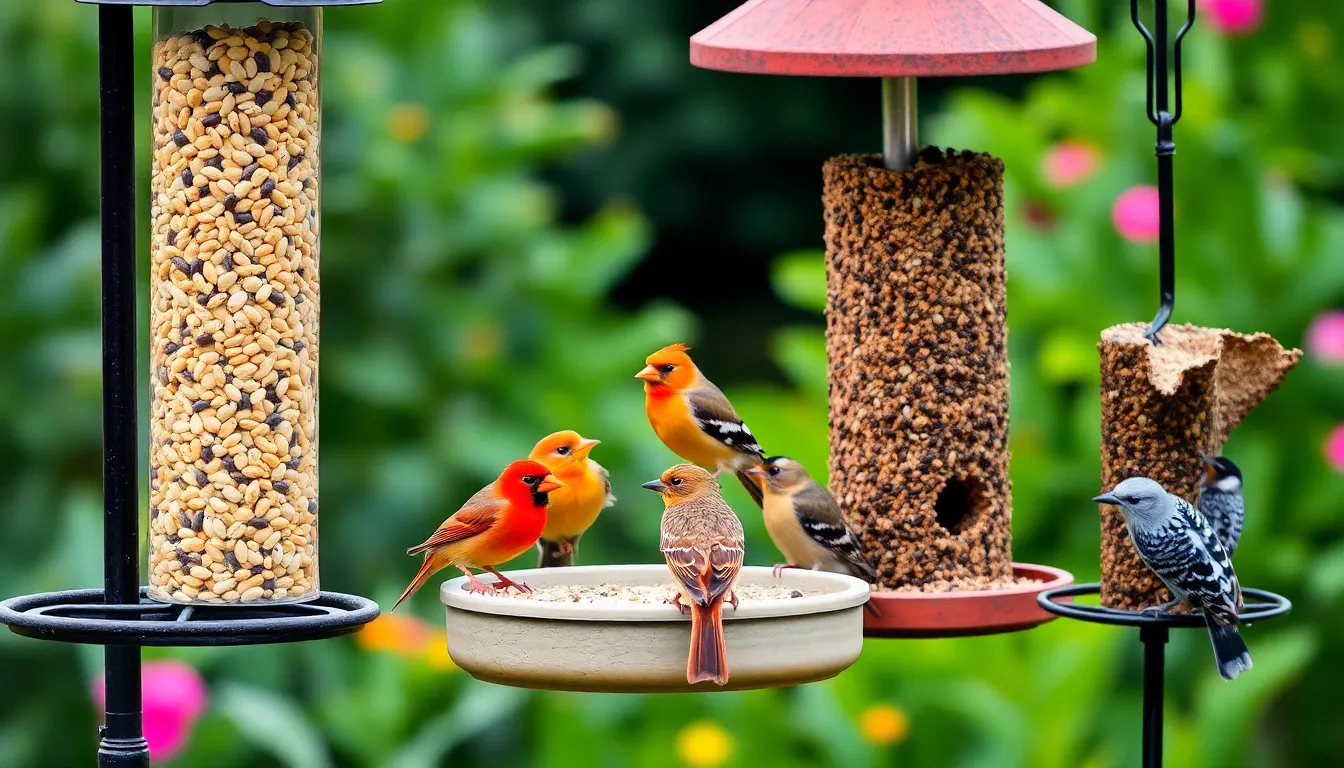
Bird feeders come in various designs that cater to different feeding preferences and bird species. Each feeder type offers unique advantages for attracting exact birds while maintaining the feeding environment we’ve established.
Tube Feeders
Tube feeders accommodate small songbirds like finches, chickadees, and nuthatches through their cylindrical design with multiple feeding ports. These feeders protect seeds from weather exposure and reduce spillage compared to open platform designs. Mesh guards around feeding ports prevent larger birds from accessing the food while allowing smaller species to feed comfortably.
We find tube feeders particularly effective for dispensing nyjer seeds, sunflower seeds, and mixed seed blends. Their vertical structure makes them ideal for hanging installations and saves space in compact feeding areas. The clear plastic or glass construction lets us monitor seed levels easily and refill when necessary.
Platform Feeders
Platform feeders create open feeding surfaces that welcome ground feeding birds such as cardinals, jays, and sparrows. These flat tray designs accommodate birds of various sizes and feeding styles simultaneously. The open access attracts species that prefer to see their surroundings while eating.
Drainage holes in quality platform feeders prevent water accumulation and keep seeds dry during rain. We recommend models with raised edges that contain food while allowing easy cleanup of hulls and debris. Some platform feeders include removable screens that separate birds from accumulated waste underneath.
Suet Feeders
Suet feeders provide high energy fat based nutrition that woodpeckers, nuthatches, and creepers require especially during winter months. These specialized feeders hold suet cakes or homemade suet mixtures in wire cage structures that allow birds to cling while feeding. The vertical feeding position suits woodpeckers’ natural foraging behavior perfectly.
Metal suet feeders withstand persistent pecking from larger woodpecker species better than plastic alternatives. We position these feeders on tree trunks or sturdy poles where woodpeckers feel secure approaching from below. Double sided suet feeders accommodate multiple birds simultaneously and increase feeding efficiency during busy periods.
Bird Food Options: Seeds, Nuts, and More
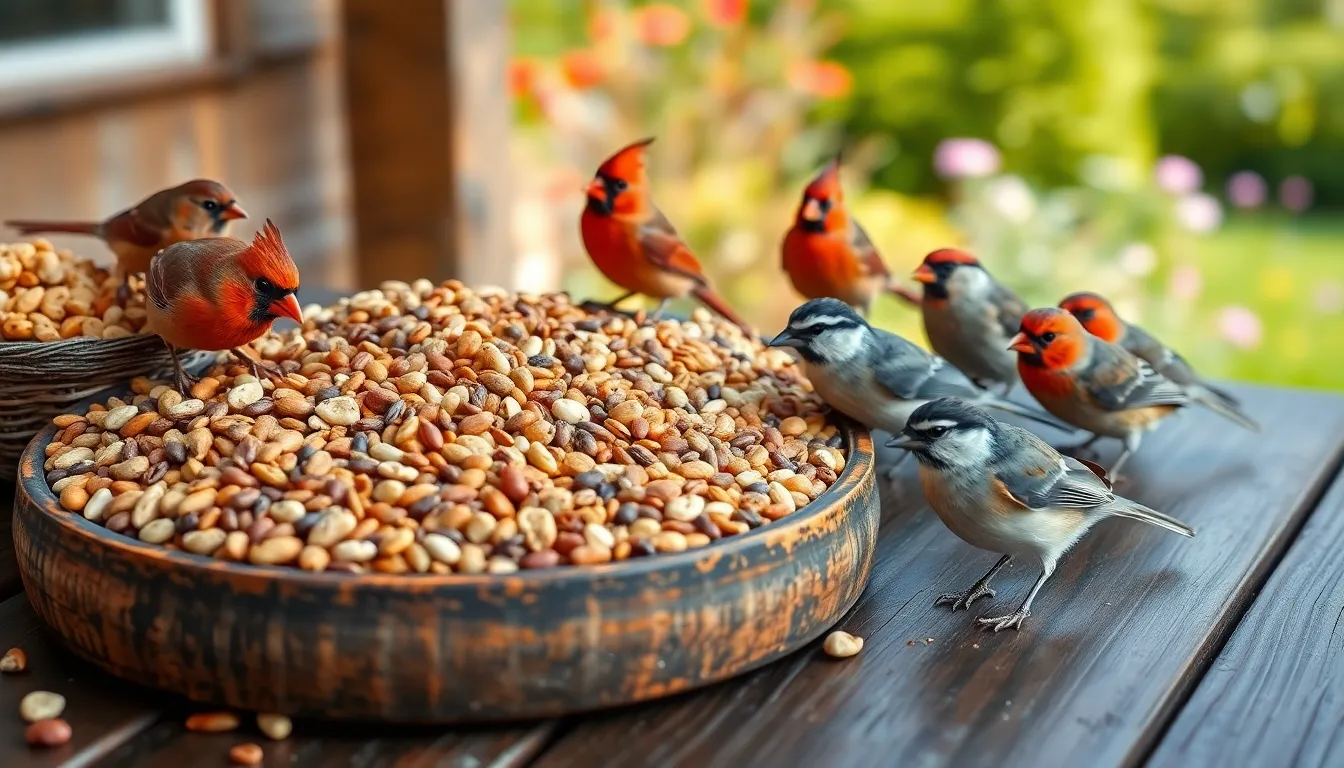
Selecting appropriate food options determines which bird species visit our feeding stations. Different birds have evolved to consume exact foods based on their beak shapes, digestive systems, and nutritional requirements.
Popular Seed Varieties
Sunflower seeds remain the most versatile choice for attracting diverse bird species to our feeders. Black oil sunflower seeds contain 28% fat content and thin shells that smaller birds can easily crack open. Cardinals, chickadees, nuthatches, and finches consume these seeds regularly throughout the year.
Nyjer seeds attract goldfinches, siskins, and redpolls exclusively due to their high oil content reaching 38%. These tiny black seeds require specialized tube feeders with small ports measuring 5/32 inches to prevent spillage while accommodating finch feeding behaviors.
Safflower seeds provide an excellent alternative when squirrels become problematic at our feeding stations. Most mammals find the bitter taste unpalatable while cardinals, chickadees, and house finches readily consume them. The white seeds contain 38% fat and offer comparable nutrition to sunflower seeds.
Millet appeals to ground feeding birds including sparrows, juncos, and doves. White millet proves more attractive than red varieties and works best when scattered on platform feeders or directly on the ground beneath other feeders.
Specialty Foods for Different Species
Suet cakes deliver concentrated energy containing 50% fat content essential for woodpeckers, nuthatches, and creepers during winter months. Rendered beef fat mixed with seeds, nuts, or dried fruits creates effective homemade versions costing 60% less than commercial options.
Peanuts attract jays, woodpeckers, and chickadees when offered whole, chopped, or as butter spread on tree bark. Raw unsalted peanuts provide optimal nutrition while salted varieties can harm birds through excessive sodium intake.
Dried fruits including raisins, cranberries, and chopped apples appeal to mockingbirds, catbirds, and orioles during migration periods. These foods supplement natural fruit sources when trees and shrubs aren’t producing.
Mealworms serve as protein rich options attracting bluebirds, wrens, and robins particularly during nesting season from March through August. Live mealworms prove most effective though dried versions offer convenient storage and longer shelf life.
Nectar answers using 4 parts water to 1 part white sugar attract hummingbirds, orioles, and some woodpeckers. Red food coloring isn’t necessary and may harm birds while honey and artificial sweeteners can cause fatal digestive issues.
Attracting Specific Bird Species Through Feeding
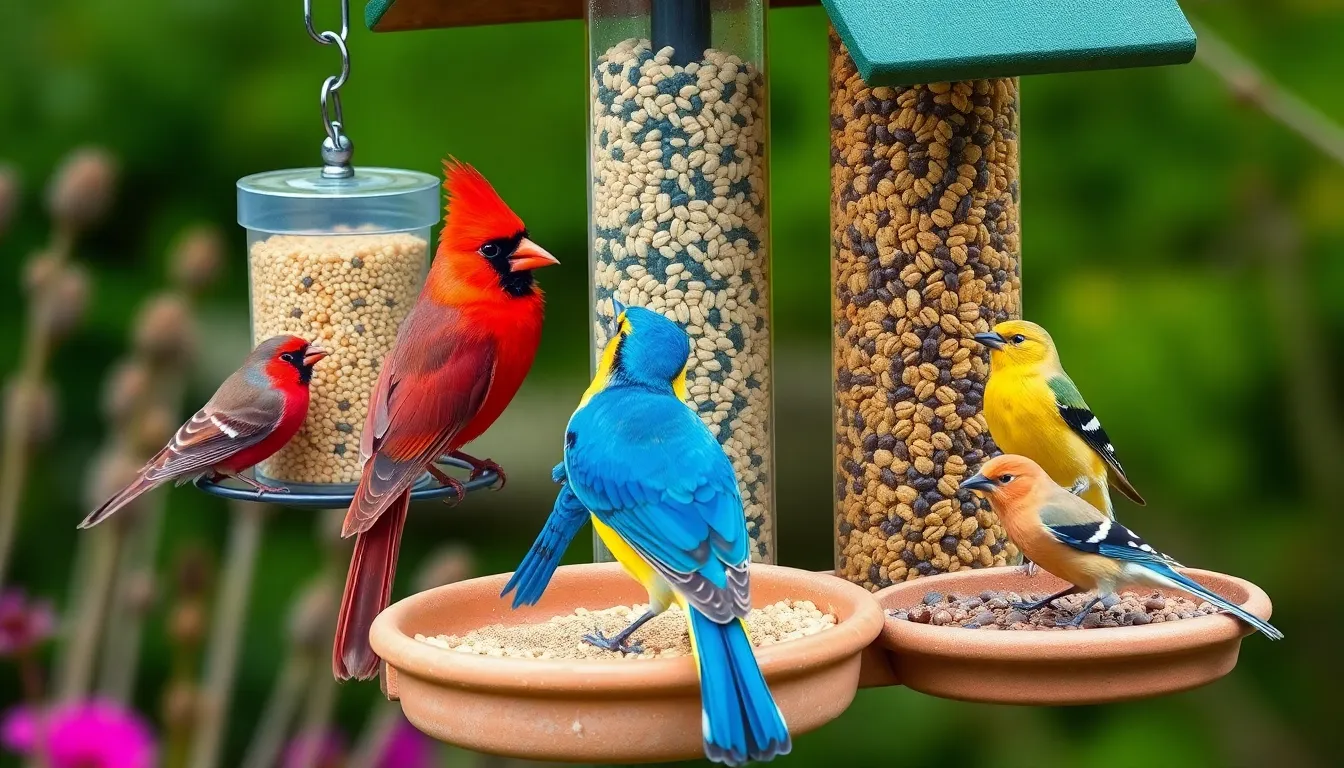
Targeting exact bird species transforms feeding stations into customized habitats that cater to each species’ unique dietary preferences and feeding behaviors. Understanding these preferences enables us to create focused feeding environments that draw desired birds while supporting their nutritional requirements throughout the year.
Cardinals and Blue Jays
Cardinals prefer large, flat surfaces where they can easily access their food without obstruction. Platform feeders positioned 3-5 feet above ground provide ideal feeding conditions for these vibrant red birds. Sunflower seeds, safflower seeds, and cracked corn form the foundation of cardinal-attracting food mixes.
Blue jays gravitate toward peanuts, corn, and sunflower seeds, often dominating feeding areas with their bold personalities. Large capacity tube feeders with sturdy perches accommodate their size while ground feeding areas allow them to forage naturally. Both species appreciate consistent feeding schedules during early morning and late afternoon hours.
Finches and Small Songbirds
Goldfinches show strong preferences for nyjer seeds, requiring specialized thistle feeders with small feeding ports. These mesh or tube-style feeders prevent seed waste while accommodating finches’ acrobatic feeding positions. House finches and purple finches also enjoy nyjer but readily consume sunflower chips and millet.
Chickadees and nuthatches prefer high-fat foods like sunflower seeds and suet, often visiting feeders in small flocks. Multiple small feeders positioned at varying heights create feeding opportunities for different species without competition. These birds cache food for later consumption, making consistent refilling essential during autumn months.
Woodpeckers and Insect Eaters
Woodpeckers require high-energy suet products that mirror their natural diet of insects and larvae. Suet feeders mounted on tree trunks or specialized poles provide natural feeding positions while protecting suet from rain and snow. Pileated woodpeckers prefer large suet feeders, while downy woodpeckers use smaller versions.
Mealworm feeders attract insectivorous birds like wrens, bluebirds, and robins during breeding season when protein requirements increase dramatically. Fresh or dried mealworms in shallow dishes create accessible feeding stations that support nesting birds’ energy demands.
Hummingbirds
Hummingbirds depend on nectar feeders filled with sugar water mixed at a 4:1 ratio of water to white granulated sugar. Red nectar feeders with multiple feeding ports accommodate several birds simultaneously while bright colors attract these tiny visitors from considerable distances.
Positioning hummingbird feeders near flowering plants creates integrated feeding environments that provide both artificial and natural nectar sources. Regular cleaning every 3-4 days prevents harmful bacterial growth that threatens hummingbird health.
Migration Season Strategies
Spring migration brings increased bird activity requiring enhanced feeding protocols between March and May. Multiple feeder types stocked with diverse food options support various species during their energy-intensive journeys. High-fat foods like suet and sunflower seeds provide essential calories for long-distance travelers.
Fall migration creates similar opportunities from August through October as birds prepare for winter survival or southern journeys. Consistent food availability during these periods establishes feeding stations as reliable resources that encourage return visits in subsequent seasons.
Common Bird Feeding Mistakes to Avoid
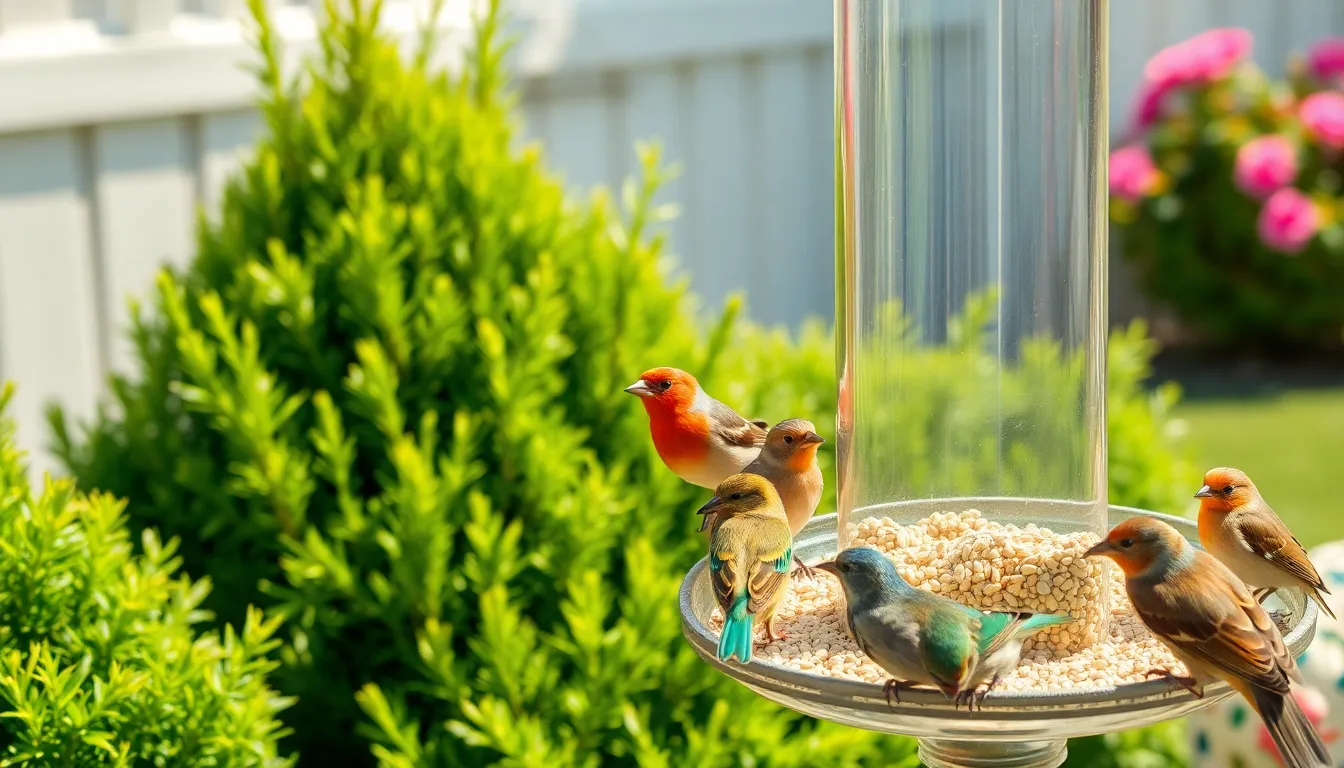
Bird feeding mistakes can deter birds from visiting our feeders and potentially harm the very wildlife we’re trying to support. Understanding these common errors helps us create more effective and safer feeding environments for our feathered visitors.
Using Low Quality or Inappropriate Seeds
Cheap seed mixes often contain fillers like milo, wheat, and cracked corn that most songbirds reject. These unwanted seeds accumulate beneath feeders, creating waste and attracting rodents to our yards. Black oil sunflower seeds, nyjer, and safflower provide better nutritional value and attract more desirable bird species than generic mixed varieties.
Moldy or spoiled seeds pose serious health risks to birds and can cause fatal infections. We must inspect our seed supplies regularly, discarding any that show signs of moisture damage or fungal growth. Fresh seeds stored in airtight containers maintain their nutritional quality and prevent contamination.
Neglecting Feeder Cleaning and Maintenance
Dirty feeders become breeding grounds for bacteria and diseases that spread rapidly among bird populations. Monthly cleaning with a 10% bleach solution eliminates harmful pathogens and prevents deadly outbreaks like salmonellosis. Rinse feeders thoroughly after cleaning and allow them to dry completely before refilling.
Accumulated seed hulls and debris beneath feeders create unsanitary conditions that attract pests and disease vectors. Regular ground maintenance includes raking away old seeds, hulls, and droppings from feeding areas. This practice keeps our bird feeding stations healthy and appealing to visiting species.
Inconsistent Feeding Schedules
Birds develop feeding patterns based on reliable food sources, and irregular refilling disrupts their daily routines. Empty feeders force birds to expend valuable energy searching for alternative food sources, especially during harsh weather conditions. Consistent feeding schedules help establish our yards as dependable stops along birds’ regular foraging routes.
Abruptly stopping bird feeding during active seasons can leave birds without expected food sources they’ve incorporated into their survival strategies. If we plan to discontinue feeding temporarily, gradually reducing food quantities over several days allows birds to adjust and find alternative sources.
Placing Feeders in Dangerous Locations
Feeders positioned too close to windows create collision hazards that kill millions of birds annually. The ideal distance keeps feeders either within 3 feet of windows or farther than 30 feet away, reducing the likelihood of fatal impacts. Window decals and screens provide additional protection against bird strikes.
Feeders placed in open areas without nearby cover leave birds vulnerable to predators like hawks and cats. Strategic placement near shrubs or trees gives birds quick escape routes while maintaining clear sightlines for observation. Dense vegetation within 10 feet of feeders provides optimal safety for feeding birds.
Ignoring Water Requirements
Many bird feeding setups lack adequate water sources, limiting their effectiveness in attracting diverse species. Fresh water for drinking and bathing increases bird activity around feeders by 300%, according to wildlife observation studies. Shallow birdbaths or drippers complement feeding stations and support birds’ complete daily needs.
Frozen water sources during winter months leave birds without essential hydration options when natural water becomes scarce. Heated birdbaths or regularly refreshed warm water maintains year round accessibility. Moving water features like fountains or drippers attract more bird species than static water sources.
Seasonal Bird Feeding Considerations
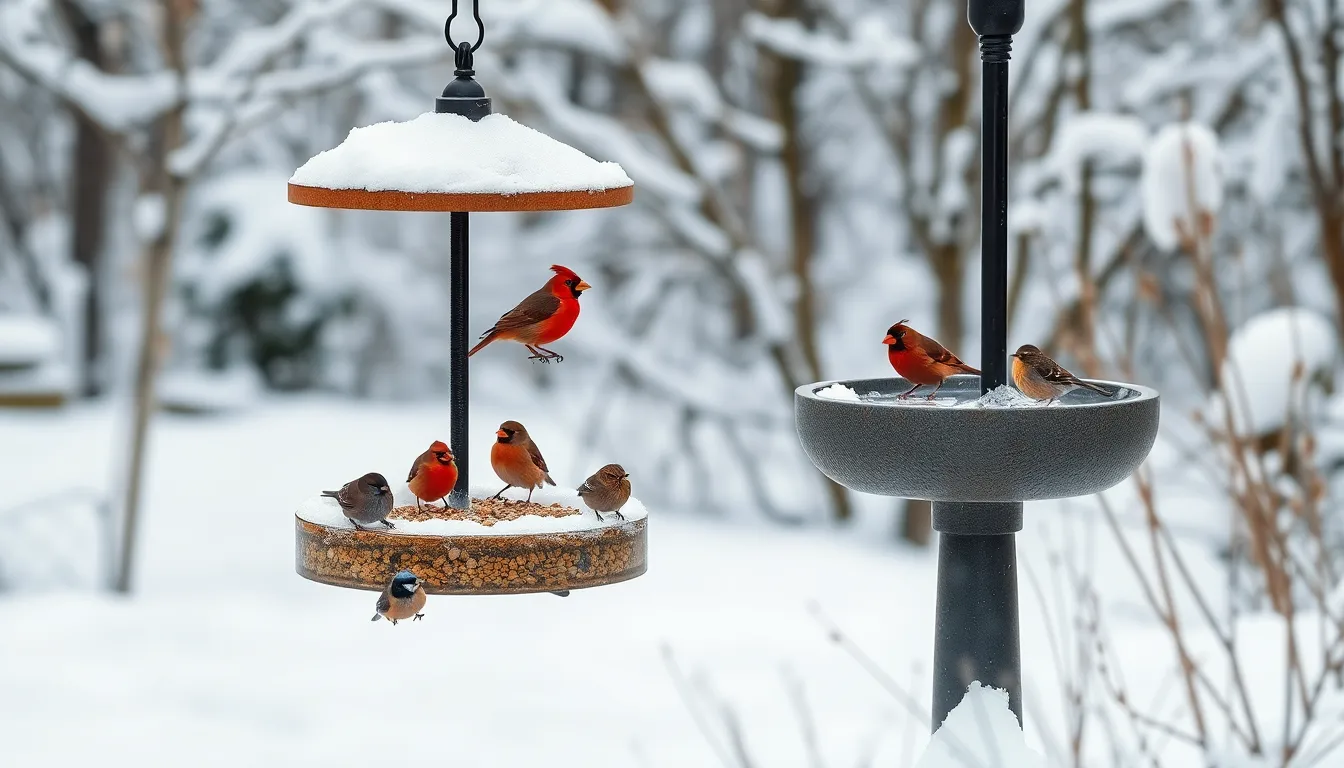
Bird feeding requirements change dramatically throughout the year as species adapt to varying weather conditions and natural food availability. Successful feeders modify their approach based on seasonal patterns to support birds when they need assistance most.
Winter Feeding Strategies
Winter feeding becomes critical when natural food sources disappear under snow and ice. Birds require 20-25% more calories during cold months to maintain body temperature and survive harsh conditions.
High-fat foods provide essential energy for winter survival. Suet cakes containing beef fat, peanut butter, and seeds deliver concentrated calories that fuel birds through freezing temperatures. Black oil sunflower seeds offer superior nutrition with their 28% fat content compared to striped sunflower seeds at 20%.
Platform feeders work effectively in winter because they accommodate multiple species simultaneously. Cardinals, juncos, and sparrows gather at these stations during snowstorms when ground foraging becomes impossible. Tube feeders require frequent monitoring since wet snow can clog feeding ports and spoil seeds.
Fresh water becomes scarce when temperatures drop below freezing. Heated bird baths maintain liquid water sources that attract 40% more species than feeding stations alone. Position water sources within 10 feet of feeders to create active winter feeding zones.
Feeding frequency increases during severe weather events. Stock feeders daily when temperatures remain below 20°F for extended periods. Chickadees and nuthatches cache seeds for later consumption, making consistent food supplies crucial for their winter survival strategies.
Spring and Summer Adjustments
Spring feeding supports migrating birds that arrive with depleted energy reserves from long journeys. Peak migration occurs between March and May when birds require immediate access to high-protein foods.
Reduce heavy suet offerings as temperatures rise above 70°F since melted fat can damage bird feathers. Replace winter suet with no-melt varieties or remove suet feeders entirely during hot summer months.
Fresh fruits attract orioles, tanagers, and other species that return from tropical wintering grounds. Orange halves, grape jelly, and apple slices provide natural sugars that supplement insect hunting during nesting season.
Nyjer seed consumption peaks during spring when goldfinches, siskins, and other finches prepare for breeding. These tiny seeds contain 35% fat content that supports egg production and chick development.
Summer feeding shifts focus to supporting parent birds feeding nestlings. Protein-rich foods like mealworms and peanut pieces help adult birds meet the demanding nutritional needs of growing chicks.
Clean feeders weekly during warm months since bacteria and mold grow rapidly in humid conditions. Remove uneaten seeds every 2-3 days to prevent spoilage that can cause fatal diseases in bird populations.
Water becomes increasingly important as natural sources dry up during summer drought periods. Shallow basins with 1-2 inch depths accommodate small songbirds while deeper sections serve larger species like robins and thrushes.
Safety and Hygiene in Bird Feeding
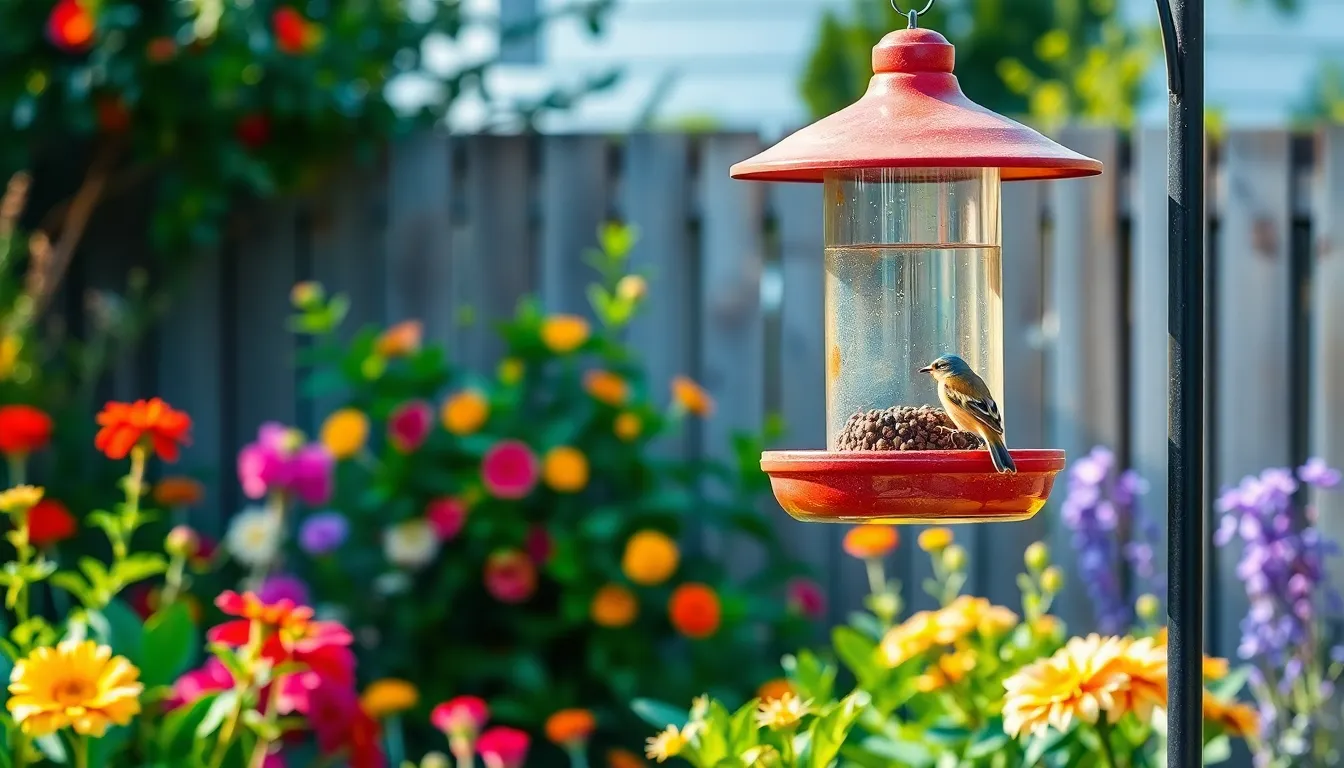
Maintaining clean feeding stations prevents disease transmission among bird populations and ensures their continued health. Regular cleaning eliminates harmful bacteria, mold, and parasites that accumulate in dirty feeders and can spread rapidly through bird communities.
Feeder Cleaning Schedule
Clean feeders every 2 weeks during normal conditions and weekly during wet weather or high bird activity periods. Remove all old seeds and debris using a diluted bleach solution (1 part bleach to 9 parts water) followed by thorough rinsing and complete air drying.
| Cleaning Frequency | Conditions | Method |
|---|---|---|
| Weekly | Wet weather, high activity | Bleach solution scrub |
| Bi-weekly | Normal conditions | Soap and water wash |
| Daily | Hummingbird feeders | Hot water rinse |
| Monthly | Suet feeders | Complete disassembly |
Disassemble tube feeders completely to reach all interior surfaces where mold commonly develops. Scrub feeding ports with bottle brushes to remove seed hulls and accumulated moisture that harbor bacteria.
Safe Placement Practices
Position feeders 3 feet from windows or closer than 12 inches to prevent fatal bird collisions during feeding visits. Birds approaching from 3 to 12 feet cannot adjust flight paths quickly enough to avoid glass surfaces.
Locate feeding stations 8 to 10 feet from dense shrubs and bushes where predators hide while maintaining easy escape routes for visiting birds. Cats account for 63% of bird predation incidents near feeders according to wildlife management studies.
Elevate platform feeders 5 feet above ground level to reduce access by ground predators like raccoons and opossums. Install baffles on feeder poles to prevent climbing predators from reaching seed sources.
Water Source Maintenance
Change water in birdbaths every 2 to 3 days during warm weather and daily when temperatures exceed 80°F. Stagnant water breeds mosquitoes and develops harmful algae that can poison visiting birds.
Scrub birdbath surfaces weekly with stiff brushes to remove algae buildup and bacterial films. Add fresh water to maintain 1 to 2 inch depths that accommodate various bird species safely.
Install dripper systems or fountains to create moving water that attracts more bird species while reducing bacterial growth. Moving water stays fresh longer and provides auditory cues that draw birds from greater distances.
Seed Storage Guidelines
Store bird seeds in sealed metal or heavy plastic containers to prevent rodent contamination and moisture absorption. Rodent droppings contaminate seed supplies and spread diseases to both birds and humans.
Purchase seeds in quantities consumed within 30 days during warm weather and 60 days during winter months. Fresh seeds maintain nutritional value and prevent rancidity that can harm bird health.
Check stored seeds monthly for signs of mold, insect infestation, or unusual odors that indicate spoilage. Discard compromised seeds immediately and clean storage containers before refilling with fresh supplies.
Disease Prevention Strategies
Monitor feeding areas for sick or dead birds and discontinue feeding for 2 weeks if multiple casualties occur. Contact local wildlife authorities when unusual bird deaths happen near feeding stations.
Space multiple feeders 6 feet apart to reduce overcrowding and aggressive interactions that stress birds and increase disease transmission rates. Stressed birds have weakened immune systems that make them vulnerable to infections.
Remove spilled seeds from ground areas within 24 hours to prevent attracting rodents and reducing bacterial growth in wet conditions. Ground accumulation creates unsanitary conditions that harm both birds and surrounding wildlife.
Conclusion
Bird feeding transforms our outdoor spaces into thriving wildlife sanctuaries while deepening our connection with nature. When we combine the right feeders food choices and maintenance practices we create environments where birds flourish year-round.
The rewards extend far beyond attracting colorful visitors to our yards. We’re actively supporting local ecosystems reducing stress through wildlife observation and gaining valuable educational experiences for our families.
Success in bird feeding comes from consistency attention to safety and understanding that each species has unique needs. By avoiding common mistakes and maintaining clean feeding stations we ensure healthy bird populations for generations to enjoy.
Start your bird feeding journey today and discover how this simple practice enriches both wildlife and our daily lives.
Frequently Asked Questions
What is bird feeding and why is it important?
Bird feeding involves providing food sources for wild birds in outdoor spaces. It’s important because it supports local bird populations, especially during harsh weather and in urban areas with diminished habitats. This practice also allows humans to observe wildlife behavior closely, reduces stress, and contributes to wildlife conservation by supplementing natural food sources.
How many Americans participate in bird feeding?
Research indicates that 57 million Americans engage in bird feeding, making it a popular hobby that contributes significantly to the economy while fostering connections with nature.
Where should I place my bird feeders for best results?
Place feeders in safe locations away from predators but visible for observation. Elevated feeders work best for most bird types. Position them near natural cover like shrubs or trees, and ensure they’re close to water sources to significantly increase bird activity and provide a complete habitat.
What are the different types of bird feeders available?
The main types include tube feeders (ideal for small songbirds like finches), platform feeders (perfect for ground-feeding birds like cardinals), and suet feeders (designed for woodpeckers and nuthatches). Each feeder type attracts specific bird species and offers different benefits for feeding and protection.
What are the best foods to attract different bird species?
Popular options include black oil sunflower seeds (attracts cardinals and chickadees), nyjer seeds (goldfinches), safflower seeds (cardinals while deterring squirrels), millet (ground-feeding birds), suet cakes (woodpeckers), peanuts (jays and nuthatches), and nectar (hummingbirds). Different foods attract different species, so variety is key.
How often should I clean my bird feeders?
Clean feeders every 2-3 weeks during normal conditions, or weekly during wet weather to prevent mold and disease. Use a 10% bleach solution, scrub thoroughly, rinse well, and let dry completely before refilling. Regular cleaning prevents disease transmission and keeps birds healthy.
What common mistakes should I avoid when bird feeding?
Avoid using low-quality seeds, neglecting feeder cleaning, maintaining inconsistent feeding schedules, and poor feeder placement near windows or predator areas. Don’t forget to provide fresh water sources, as this significantly increases bird activity and is essential for their well-being year-round.
How can I attract specific bird species to my feeders?
Use targeted foods and feeder types: black oil sunflower seeds in tube feeders for cardinals, nyjer in specialized feeders for goldfinches, suet feeders for woodpeckers, and nectar feeders for hummingbirds. Research specific preferences of desired species and adjust your setup accordingly.
When is the best time to start bird feeding?
You can start bird feeding any time of year, but fall and winter are particularly important when natural food sources are scarce. Maintain consistent feeding schedules, especially during peak seasons and adverse weather conditions, to help birds rely on your feeding station.
Do I need to provide water along with food?
Yes, providing fresh water significantly increases bird activity and is essential for bird health. Water sources are crucial year-round, especially during winter months when natural sources may freeze. Clean, shallow water dishes or bird baths complement feeding stations perfectly.

